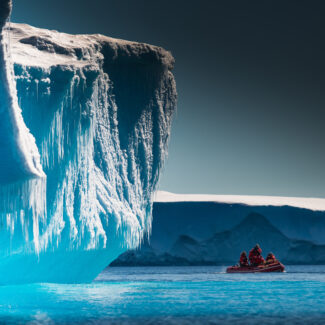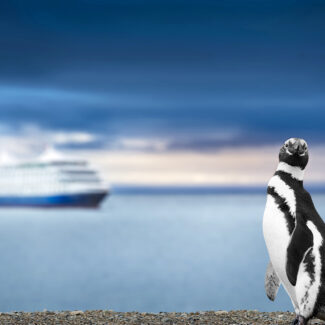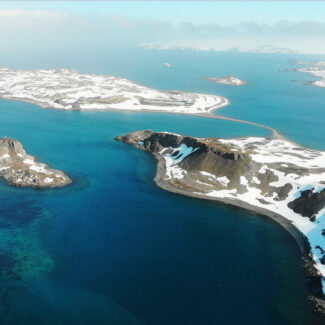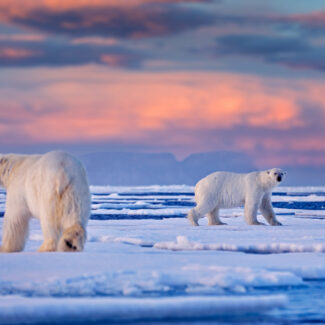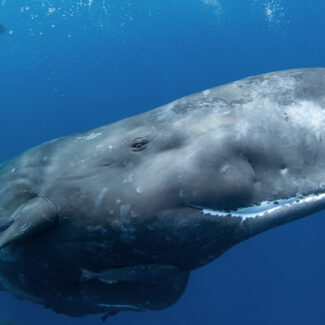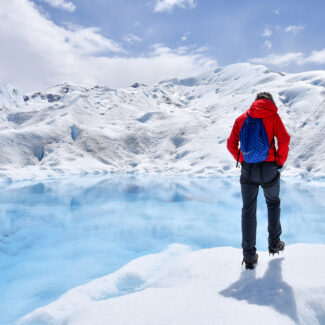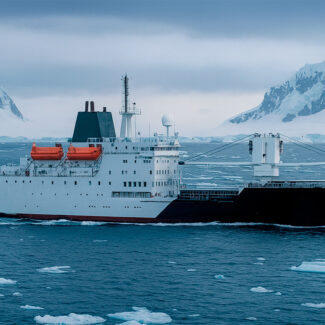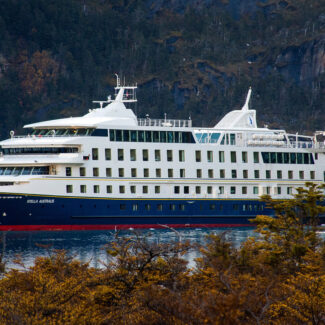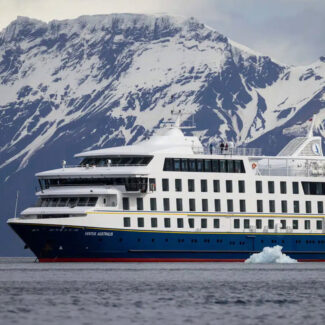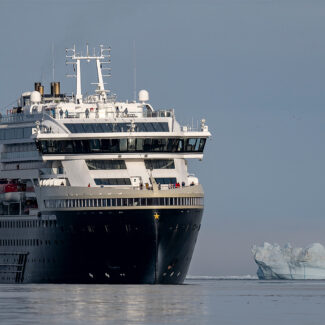North Pole History Of Exploration (Including Timeline)
Set amid trackless and ever-shifting sea ice in the Arctic Ocean, the North Pole has long tantalized humankind. Early navigators dreamed of a (fantastical, as it turned out) Open Polar Sea that might offer efficient ice-free passage from Europe to the Pacific over the top of the world. Beyond the usual commercial and military hungers, the North Pole beckoned—and continues to beckon—adventurers who, initially, strove to be the very first to reach this almost mythic point, and then continued to scheme up new ways to do so and thereby enshrine themselves in the annals of exploration.
In this article, we’ll present a “cliff notes”-style survey of North Pole expedition history as well as a North Pole exploration timeline. As you read, keep this caveat in mind: We don’t know for certain whether Native peoples of the Arctic, such as the Inuit, might have visited this remote zone sometime in the distant and unrecorded past, though certainly indigenous savvy hugely helped Western explorers in their quest for the Pole—whether directly, as part of organized expeditions, or indirectly, by educating foreigners in the skills of Arctic travel and survival.
Imagine the courage of early explorers venturing into the icy unknown depicted in this 1720 map of the North Pole – their quests laid the foundation for the timeline of Arctic exploration we’re about to uncover!
North Pole History: Notable Early Attempts to Reach It
The first official expedition aimed at reaching the North Pole was a British one headed by Admiral William Edward Parry in 1827. While it didn’t reach its goal, it did log a new record for the northernmost point ships had then yet reached: 82°45′ N.
In June 1871, a U.S. expedition, led by the ill-fated Charles Francis Hall, departed New York City aboard the Polaris for the North Pole and was quickly hampered by internal tension as well as the rigors of the Arctic realm. Threading the waterways between Greenland and the Canadian High Arctic, the expedition reached 82°11′ N, but fell far short of its ultimate goal; Hall died in the winter camp at Thank God Harbor, Greenland, possibly of arsenic poisoning.
The George Nares-led British Antarctic Expedition of 1875-1876 also didn’t make it to its goal of the Pole, but mapped new territory between Greenland and Ellesmere Island, and, thanks to Albert Hastings Markham’s sledging team, set a new northernmost record of 83°20′26′′ N.
George W. De Long’s USS Jeannette expedition of 1879-1881 was one of those Heroic Age of Polar Exploration undertakings that exemplified how utter failure and even disaster, as judged by the bare gap between goal and outcome, could still yield valuable information for future attempts. Attempting a novel route toward the North Pole through the Bering Strait between Russia and Alaska, the Jeannette became trapped in Arctic Ocean sea ice and then ultimately crushed by it. The stranded crew ended up in three smaller boats (two cutters and a whaleboat) which became separated off the Russian Far North; some survived, thanks in large part to the assistance of native peoples, while a large portion—including De Long—perished.
Poor as the outcome was, the Jeannette expedition collected troves of useful scientific data (including sea-ice thickness measurements scientists still reference today) and also—through the ice-bound journey of the abandoned ship itself, eventually found far to the east off southwestern Greenland—suggested the pattern of Arctic Ocean currents. It also helped starkly squelch the idea of the Open Polar Sea.
The drift of the Jeannette helped inspire another unsuccessful (if not quite so tragic) expedition: that of the Fram, an 1893-1896 odyssey helmed by Norwegian explorer Fridtjof Nansen. Nansen’s idea was to freeze the Fram into the sea ice and allow natural ice movement to convey it over the North Pole. The freezing-of-the-ship part was successful; the Pole-gaining part wasn’t, though Nansen and a companion, Hjalmar Johansen, ultimately attempted to get there by skis. They managed to reach 83°13.6′ N before being forced to retreat southward—an odyssey that ultimately saw them rescued, in June of 1896, through a fortuitous run-in in Franz Josef Land with the British explorer Frederick Jackson. (The famed Norwegian explorer Roald Amundsen would try something similar more than 20 years later in the Maud, without success.)
In the summer of 1897, among the more unusual (and doomed) tries for the North Pole transpired via a Swedish effort. Salomon August Andrée along with Nils Strindberg and Knut Frænkel tried to fly over the Pole in a hydrogen balloon, the Eagle. Launching from Danes Island in the archipelago of Svalbard, the balloonists quickly ran into trouble and ended up crash-landing far out on the sea ice only a couple days after takeoff. The three men hauled their cargo for months to reach dry land: the remote Svalbardian isle of Kvitøya, where, apparently within weeks of arrival, all three men died.
Their fate was a mystery for more than three decades, till, in August 1930, Norwegian sealers stumbled across the out-of-the-way island and the camp and remains of the Eagle’s crew. Photos were developed from the film roll found carefully tucked away at the long-quiet camp, but exact explanation for the men’s deaths remains elusive (though it’s been suggested that trichinosis from eating polar-beat meat—or even an attack by a polar bear—could have been responsible).
Other (unsuccessful) North Pole-aimed expeditions at the close of the 19th and opening of the 20th centuries included Walter Wellman’s several attempts by both sled and airship (1894, 1899, 1907, and 1909), the Baldwin-Ziegler Expedition of 1901-1902, and the Fiala-Ziegler Expedition of 1903-1906.
Disaster struck many early attempts, as vividly captured in this painting of the Jeannette expedition abandoning their ice-bound vessel – a stark reminder of the formidable challenges faced in the quest for the North Pole. Source: James Gale Tyler, Public domain, via Wikimedia Commons
Cook & Peary
Likely the most contentious issue in the saga of North Pole exploration history involves the competing—and, largely, rejected—claims, from 1908 and 1909, of two American explorers: Frederick A. Cook and Robert E. Peary. It’s such a dramatic and interesting story that we’ve devoted an entire article to it, which you can read here.
North Pole Expedition History: The First to the Pole
Although the claims of Cook and Peary have never, and (most likely) can never, be entirely discounted, most experts agree that the first visit to the North Pole—an off-the-ground visit, but a visit nonetheless—came in early May of 1926.
Although Richard Byrd of the U.S. Navy and his partner Flord Bennett said they flew over the Pole on May 9th in the airplane Josephine Ford—and earned U.S. Congressional Medals of Honor for it—this claim is a disputed one. Some of the doubt arises from the discovery of Byrd’s diary many decades later, which some have interpreted as showing the men opted to turn back some 150 miles (240 km) short of the Pole on account of an oil leak.
Inarguable is the fact that, a mere three days after Byrd and Bennett’s flight, the airship Norge and its crew, which included the Norwegian Roald Amundsen, the American Lincoln Ellsworth, and, as pilot, the Italian Umberto Nobile, passed over the North Pole: the first doubt-free reaching of the Pole.
The dawn of a new era! This photo captures the Norge on April 10th, 1926, poised for its groundbreaking trans-polar flight from Rome to Alaska – a moment that would redefine what was possible in the history of North Pole expeditions.
The Tragedy of the Italia
Italy commissioned Umberto Nobile, who’d earned glory piloting the Norge, for another journey to the North Pole. He and his crew took off in the airship Italia from Kings Bay, Spitsbergen, on May 23, 1928 and successfully circled the Pole the following day. But on May 25, snarled in clouds and fog, the Italia crash-landed on the sea ice, killing one, sending six others into oblivion trapped in the drifting wreckage, and marooning the remaining survivors—Nobile among them—some 140 miles northeast of Spitsbergen.
A ham-radio operator in Russia was able to pick up the remaining crew’s distress signal, but rescue attempts were belabored—it took weeks for an Italian plane to locate the men and drop them supplies. Roald Amundsen was among those onboard a French rescue plane attempting to reach the Italia survivors; it went missing on June 18, and no sign of the aircraft or its crew has ever been found.
Finally, on July 12, a Russian icebreaker, the Krasin, rescued the Italia men who remained on the ice.
First by Ship
The USS Nautilus launched in January 1925 as the world’s first nuclear-powered submarine. On August 3, 1958, as part of the top-secret U.S. Navy “Operation Sunshine,” the Nautilus passed beneath the pack ice of the North Pole, becoming the first vessel to reach it. President Dwight D. Eisenhower personally congratulated the Nautilus crew, commanded by William R. Anderson, upon their return.
The following year, on March 17, 1959, another U.S. nuclear-powered submarine, the Skate (which had also cruised below the Pole shortly after the Nautilus’s journey, becoming the second ship to do so), surfaced through the ice at the Pole: another first.
Breaking the surface after a historic feat! Here’s the USS Nautilus, the world’s first nuclear-powered submarine, which achieved the seemingly impossible in 1958 by being the first vessel to navigate beneath the Arctic ice to the North Pole.
Source: U.S. Navy, Public domain, via Wikimedia Commons
Overland Achievements: 1960s to 1980s
Ralph Plaisted of Minnesota, USA, was an early adopter and enthusiastic fan of the snowmobile. To test the machine’s cold-weather hardiness, he embarked on a 250-mile snowmobile journey in the dead of winter 1965 between Ely, up in the North Woods of Minnesota, to St. Paul—in temperatures that plunged to 41 degrees below zero.
In 1968, Plaisted led a crew of two Americans (Gerald Pitzl and Walter Pederson) and a Canadian (Jean-Luc Bombardier, part of the family behind the Ski-Doo company) on a harrowing snowmobile journey from Ward Hunt Island in the Canadian Arctic to the North Pole, skirting pressure ridges, crevasses, and leads in what ended up tallying more than 800 miles of motoring along. On April 19, more than 40 days after embarking, Plaisted and his companions reached the Pole—the first to do so by “overland” means—and raised American and Canadian flags there.
The 2008 New York Times obituary of Plaisted included a memorable quote he gave to the St. Paul Pioneer Press upon his return from the North Pole: “Boy, it’s cold up there. I don’t know why anyone would want to do it again.”
The same year, 1968, Wally Herbert launched one of the last truly unprecedented undertakings in North Pole expedition history: the British Trans-Arctic Expedition, which crossed by foot and dogsled some 3,800 miles of Arctic Ocean sea ice between Point Barrow, Alaska and Svalbard. On April 4, 1969—only a few days shy of the 60th anniversary of Robert Peary’s claimed reaching of the Pole—Herbert and his companions, Roy “Fritz” Koerner, Ken Hedges, and Allan Gill, hoisted the Union Jack and enjoyed some beef stew at the North Pole, a bit more than 400 days into their journey. They would reach Svalbard on May 29.
Remarkable as it was, the British Trans-Arctic Expedition was aided by air-dropped supplies. In 1986, the American Will Steger made the first known fully unsupported dogsled journey to the North Pole with the eight-person, 50-dog Steger International Polar Expedition. The team included Ann Bancroft, who became the first known woman to visit the North Pole (and continued to excel in polar adventuring, skiing to the South Pole and ski-traversing the Antarctic continent).
Among other highly notable North Pole journeys of the late 20th century, Sir Ranuph Fiennes’ Transglobe Expedition saw the famed British adventurer and his team circumnavigate the globe pole-to-pole; they reached the North Pole on April 11, 1982, a year-and-a-half after hitting up the South Pole. In 1979, Dmitry Shparo led a Soviet team on the first successful expedition to the North Pole on skis. And in 1994, the Norwegian Børge Ousland was the first to reach the North Pole solo on skis and without support.
Before the age of snowmobiles and advanced gear, legendary figures like Amundsen, Shackleton, and Peary – honored here as “The Three Polar Stars” – pushed the boundaries of overland Arctic exploration, paving the way for the tracked vehicle journeys that would later traverse the ice.
North Pole Exploration Timeline
- July 23, 1827: On first formal expedition trying to reach the North Pole, Sir William Edward Parry, a British admiral, and his crew fail in that goal but set a new northernmost record of 82°45′ N on this day.
- 1871: Ill-fated U.S.-funded Polaris expedition to the North Pole; leader Charles Francis Hall sledges to 83° N before dying at winter base of Thank God Harbor, Greenland.
- 1876: Sir George Nares leads the North Pole-aimed British Arctic Expedition; Commander Albert Hastings Markham’s sledging foray attains new northernmost record of 83° 20′ 26″ N.
- 1879-1881: USS Jeannette, trying for the North Pole via new route through the Bering Strait, becomes trapped in sea ice and eventually crushed; most of the crew perishes.
- 1893-1896: Norwegian expedition led by Fridtjof Nansen intentionally locks its ship, the Fram, in the Arctic Ocean sea ice in hopes of drifting over the North Pole—another unsuccessful try.
Endurance in the ice! This image captures Nansen’s ship, the Fram, deliberately trapped in the Arctic ice – a testament to the daring, albeit ultimately unsuccessful, strategies employed during the 1893-1896 expedition to reach the North Pole by harnessing the polar drift.
- 1894: Traveling by sled out of Danes Island, American journalist-explorer Walter Wellman makes first of several attempts to reach the North Pole.
- 1897: In a Swedish endeavor, Salomon August Andrée, Nils Strindberg, and Knut Frænkel attempt to fly a hydrogen balloon from Svalbard to the North Pole, but crash on the sea ice and later perish on Kvitøya.
- 1899: Second attempt by Walter Wellman to reach the North Pole by land.
- 1901-1902: New York City mogul William Ziegler finances expedition to the North Pole led by Evelyn B. Baldwin, with whom Ziegler falls out on the heels of its failure.
- 1903-1905: Ziegler’s second polar expedition, this one led by Anthony Fiala, fails to reach the North Pole; ship crushed by sea ice, Pole-bound sledding attempts thwarted, and crew endures prolonged wait at Cape Flora (Franz Josef Archipelago) when relief vessel is delayed.
- 1907: Walter Wellman tries and fails to reach the North Pole by airship.
- April 21, 1908: Frederick A. Cook claims to reach the North Pole along with two Inuit companions, Ahwelah and Etukishook. Cook’s claim quickly comes to be disputed.
- April 6, 1909: Robert Peary, Matthew Henson, and four Inuits claim to reach the North Pole—another much-disputed avowal and not widely accepted today.
- 1909: Walter Wellman’s final attempt at getting to the North Pole (as in 1907, by air). Following this failure, and learning of Cook’s and Peary’s claims, Wellman abandons quest.
- March 5, 1914: The Russian explorer Georgy Sedov dies on the sea ice close to Rudolf Island, the Franz Josef Archipelago, on attempted sledging trek to the North Pole.
- 1918-1921: Unsuccessful attempt by Roald Amundsen to drift over the North Pole in the Maud, frozen within sea ice.
- May 1925: First attempted flight to the North Pole led by Roald Amundsen and Linclon Ellsworth in two flying boats out of Spitsbergen fails.
- May 9, 1926: Richard S. Byrd and Floyd Bennett claim to fly over the North Pole in the Josephine Ford, though this alleged first flight is disputed.
- May 13, 1926: First definitive reaching of the North Pole achieved as a flyover by Roald Amundsen, Lincoln Ellsworth, Umberto Nobile, and crew in the dirigible Norge.
- May 23, 1928: Piloted by Umberto Nobile, the airship Italia takes off from Spitsbergen on Italian expedition; circles North Pole the next day; crash-lands upon sea ice on May 25. Survivors not all rescued until mid-July.
- June 18, 1928: French plane attempting rescue of the Italia crew disappears with Roald Amundsen on board.
- April 23, 1948: Soviet scientists flown in by plane for several days of research become first undisputed party to set foot at the North Pole.
- August 3, 1958: The USS Nautilus, world’s first nuclear-powered submarine, passes under the North Pole—the first ship to reach it.
- March 17, 1959: The USS Skate, another U.S. nuclear submarine, becomes the first ship to surface at the North Pole, breaking through the ice from below to do so.
- July 31, 1962: The Skate and another U.S. submarine, the Seadragon, make first sub-ice rendezvous below the North Pole; they surface together there on August 2.
- April 19, 1968: Ralph Plaisted and three men of his crew—the fellow Americans Gerald Pitzl and Walter Pederson and the Canadian Jean-Luc Bombardier—become the first to reach the North Pole by snowmobile.
- April 4, 1969: Wally Herbert’s British Trans-Arctic Expedition is the first undisputed party to make it to the North Pole by dogsled.
- May 31, 1979: Dmitry Shparo’s seven-person Soviet team is the first to ski to the North Pole.
- April 11, 1982: The Transglobe Expedition, led by Sir Ranuph Fiennes, reaches the North Pole while circumnavigating Earth via both its geographic poles.
- 1986: Will Stegler’s Stegler International Polar Expedition is the first unsupported dogsled expedition to reach the North Pole. One of its members, Ann Bancroft, becomes the first woman at the North Pole.
- 1990: Børge Ousland and Erling Kagge are the first to reach the North Pole unsupported by skis.
- April 22, 1994: Børge Ousland reaches the North Pole on the first unsupported solo ski trek there.
Will You be the Next Explorer to Reach the North Pole?
Make the journey of a lifetime on a cruise to the North Pole, traveling in the footsteps of some of the greatest expedition leaders and adventurers in polar-exploration history!
Are you ready to answer the call of the wild? This stunning panorama of the Arctic Ocean the next generation of explorers to chart their own course in the footsteps of legends.
Disclaimer
Our travel guides are for informational purposes only. While we aim to provide accurate and up-to-date information, Antarctica Cruises makes no representations as to the accuracy or completeness of any information in our guides or found by following any link on this site.
Antarctica Cruises cannot and will not accept responsibility for any omissions or inaccuracies, or for any consequences arising therefrom, including any losses, injuries, or damages resulting from the display or use of this information.


